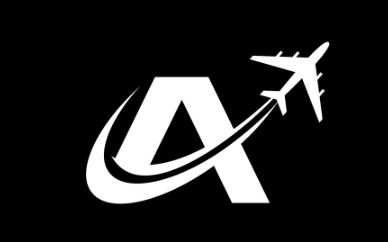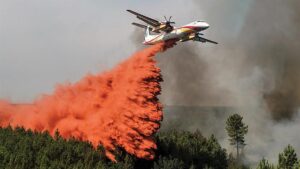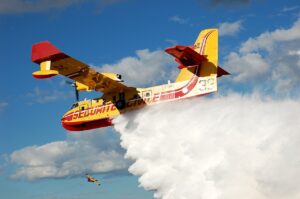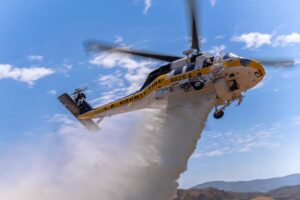
NightRide Takes to the Sky!
By: Kelly Andersson
As wildfires burned across the Greek island of Rhodes in July, covering about 15 percent of the island, the European Union decided to invest in up to 12 new firefighting aircraft. The EU then sent 11 planes and a helicopter to Greece — nearly half EU’s firefighting fleet — reported euronews.
Janez Lenarčič, the EU Commissioner for Crisis Management, said he expects individual member states to order an additional 12 planes, and said that manufacturer De Havilland Canada, headquartered in Toronto, has agreed to re-launch production of its iconic “Canadair” aircraft if the EU places the orders.
The Canadair super scoopers start at around €30 million, which is currently nearly $32 million USD. (And De Havilland Canada is hiring, by the way, if you’ve got transferable skills.)
De Havilland Aircraft has manufactured over 3,500 aircraft including what’s arguably the most advanced turboprop in the air today. The manufacturer closed down scooper production back in 2015 but now plans to design and build a new generation of Canadair scoopers, the DHC-515 — which probably will be delivered beginning in 2027. New design and production costs may very well push the price tag higher than €720 million for 24 new aircraft.
De Havilland’s been around longer than Smokey Bear. The DHC-1 Chipmunk — an all-metal trainer developed for the Royal Canadian Air Force — was the first all-Canadian design to come out of De Havilland Canada.
The company followed that with the De Havilland Beaver, a rugged and versatile bush plane that can take off and land almost anywhere, helping connect communities in Canada’s most remote northern regions. The U.S. Forest Service started flying planes on floats out of Ely, Minnesota in 1929 — still before there was a Smokey Bear — and they’re still flying Beavers today. Fire personnel in the know call this the agency’s best-kept secret weapon.
De Havilland’s other notable fire aircraft include the Twin Otter and the Dash-8.
The Calgary Herald reported last month that interest in its new waterbomber is growing as the company prepares to launch its new program to build the amphibious DHC-515 in Alberta.European countries, which signed a letter of intent last year to acquire 22 of the newly designed planes, bumped up their order by two because of more demand from France, while other jurisdictions have also made inquiries. Neil Sweeney with De Havilland said there’s significant demand globally. “It doesn’t matter if it’s in Europe or North America,” he said, “there’s a huge demand. We’ve had countries, both existing customers and new potential customers, calling us and asking about either a retrofitted aircraft or new 515s.”The DHC-515 is another in a long line of scoopers dating to the iconic Canadair CL-215, which was initially designed in the 1960s, followed by the CL-415. Scoopers fight fire across North America, and European customers include Italy, France, Greece, and Spain.Six provinces own or operate the CL-215 or CL-415 models, including Ontario, Quebec, Saskatchewan and Alberta. De Havilland in 2016 bought the manufacturing and design rights to Bombardier’s amphibious aircraft program. In March 2022 the company confirmed plans to build the new DHC-515 Firefighter, with key upgrades including state-of-the-art navigation instruments.
Hunter D’Antuono with the Flathead Beacon, by the way, captured some 5-star photos of scoopers owned by Montana’s Bridger Aerospace over the Elmo Fire on the western shore of Flathead Lake last year in August. Bridger recently purchased four more scoopers — CL-215Ts — from the Spanish government.
SOURCE: https://fireaviation.com/2023/09/24/european-union-will-buy-new-scoopers/





